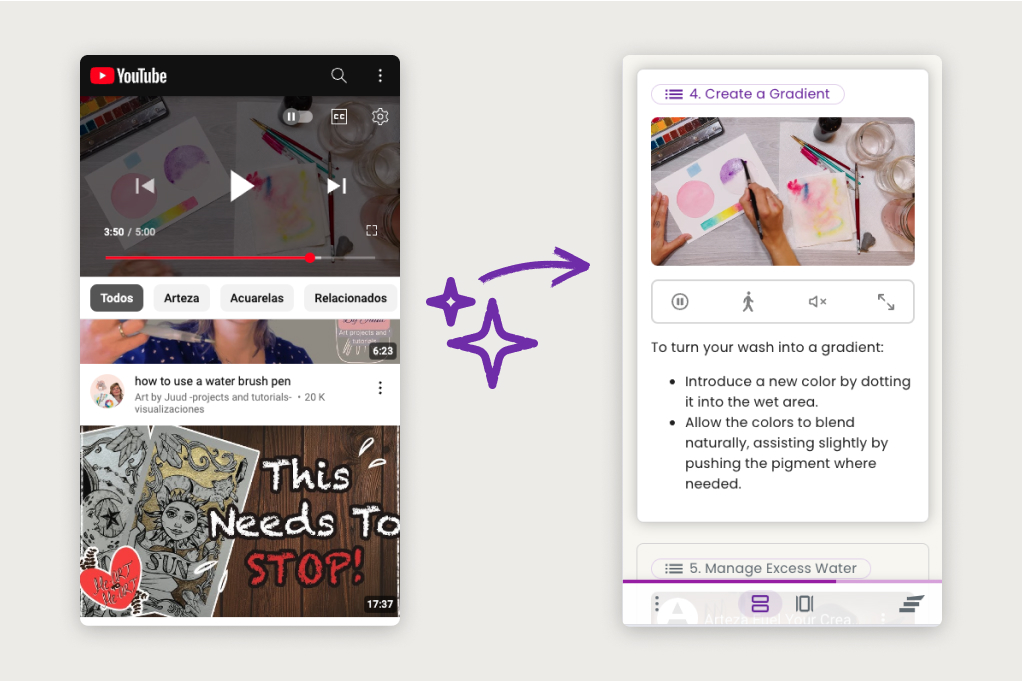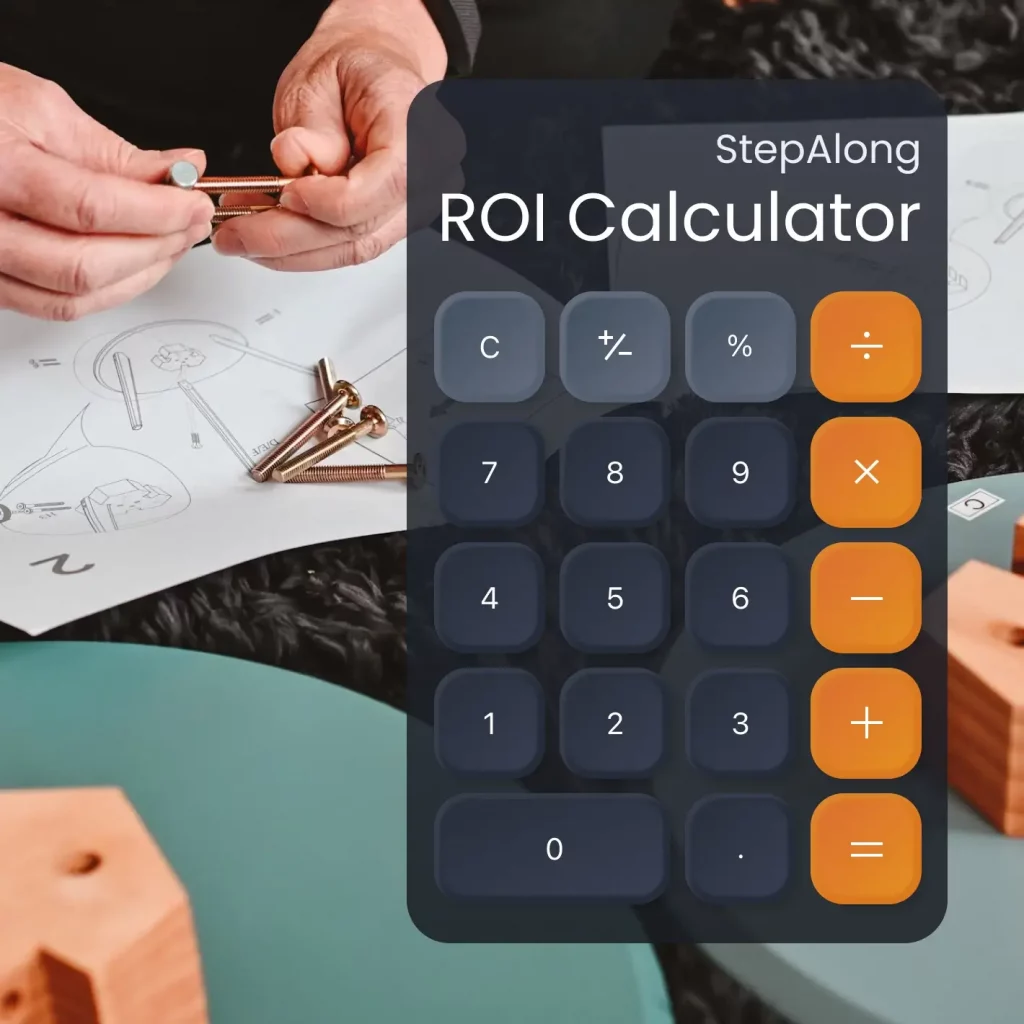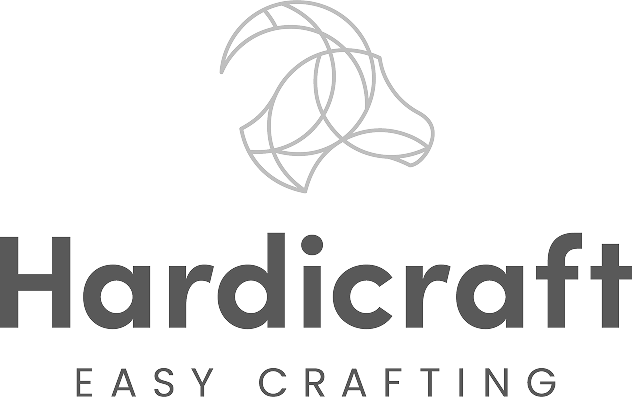This week we launched our YouTube to StepAlong converter, our first product to fully use the power of AI. The YouTube to StepAlong converter enables our users to create StepAlongs easily and quickly from their YouTube videos, with the AI doing the heavy lifting: Where manually it could take 1 to 2 hrs, using the AI converter can take minutes.
As it’s name suggest the YouTube to StepAlong converter takes a YouTube video and creates a StepAlong, as if by magic:
From this…
…to this:
The AI is able to separate the tools, materials and the specific steps to create a navigable step-by-step experience, showing in each step the specific part of the video that relates to this step.
The delivery of the YouTube to StepAlong converter represents the result of a lot of work, but more importantly it represents the coming together of many of the key ideas when we started StepAlong, we wanted to create a better experience for product instructions and with this release we address specific aspects of that: creating a better YouTube experience, creating a better how-to video format and using AI in a way that respects the original content.
A better YouTube experience
YouTube is an important channel for all sorts of content but what started out as a place to house video has turned into a daily fight for attention. YouTube videos can inspire and motivate users, but for product instructions and tutorials it is not the best experience. This is due partly to the limitations of online video (see below) and partly because of the the nature of YouTube.

Everybody’s talkin’ at me, I can’t hear a word they’re saying
As YouTube has grown, getting and keeping attention becomes more difficult, there are more and more distractions such as recommended content and ads. Additionally in the search for engagement and to counteract these distractions, videos tend to become longer and padded out with anecdotes and asides, as Syndrome from The Incredibles would say ‘you got me monologuing’ (PIXAR). In sum, the focus on helping the user getting something done has been lost.
With the power of AI we are able to solve the monologuing issue and create a StepAlong that only focusses on what is to be done. As an example, when we converted our first YouTube product tutorial into a StepAlong, a 14 minute video became a StepAlong with just 9 steps and we had assumed it hadn’t worked, but it was just that the AI was so good at separating the anecdotes and asides from the specific instructional content.
By creating a StepAlong of your product instructions videos you are essentially creating a more practical, focussed version. A user can watch the full video to get an overview of the process and get motivated, and then use the StepAlong to focus on the specific mechanics of it and complete the task.
We think that YouTube and StepAlong together is a powerful way to help your customers.
A better format for instructional video
Video and YouTube have revolutionised the creation & discovery of instructions on the internet, but not the form. StepAlong was founded to make a better instructional experience, and we feel that video can be improved.
Continuous information and screen stabbing
When you follow an instructional video online your are following a continuous stream of content, and because of that you need to stop and start according to your understanding and the difficulty of the task at hand. This process is frustrating, because most online video players hide the controls (which for viewing a video in full makes sense!), so you have to tap the screen to reveal the controls and then find the pause button. Then if you want to go back a few seconds it is hit and miss whether or not you get to the part you want.
With the StepAlong step-by-step format each step has only the specific part of the video that is relevant to understand that step and repeats until the user is ready to progress to the next step. Additionally, a step is flexible in StepAlong – one step could have a video, another step might be better supported by photos, and text can be used to support the visual and audio content.
Additionally, we have rethought the video controls keeping them always visible, with big, simple buttons, so that you can easily control the video even if your hands are covered in oil or cake mixture.
A copyright conscious approach to using AI
Finally, with this release we are using AI, a powerful tool that for many of our users is a double edged sword. It can be used to do great things but can also we used to copy and create versions of works that many feel are an abuse of their copyright.
As a company we wanted to be able to showcase our technology but respect our users and customers desire that StepAlong will not convert into another internet copying machine. To achieve this we have made it so only those who are the creators / owners of the YouTube video can publish the StepAlongs made from their YouTube videos. You do this by connecting your YouTube account to StepAlong. If you own the original YouTube video that the StepAlong was created from, you will be able to publish the StepAlong on your website, on StepAlong.com and wherever you want.
With this release we have delivered important tools to help our users make the most of their content on YouTube, allowing companies to deliver a better experience to their customers with existing assets. We will continue this theme and are working to create tools to convert text, web sites and PDFs into StepAlongs.
Read more about the specific functionality of this important release.




